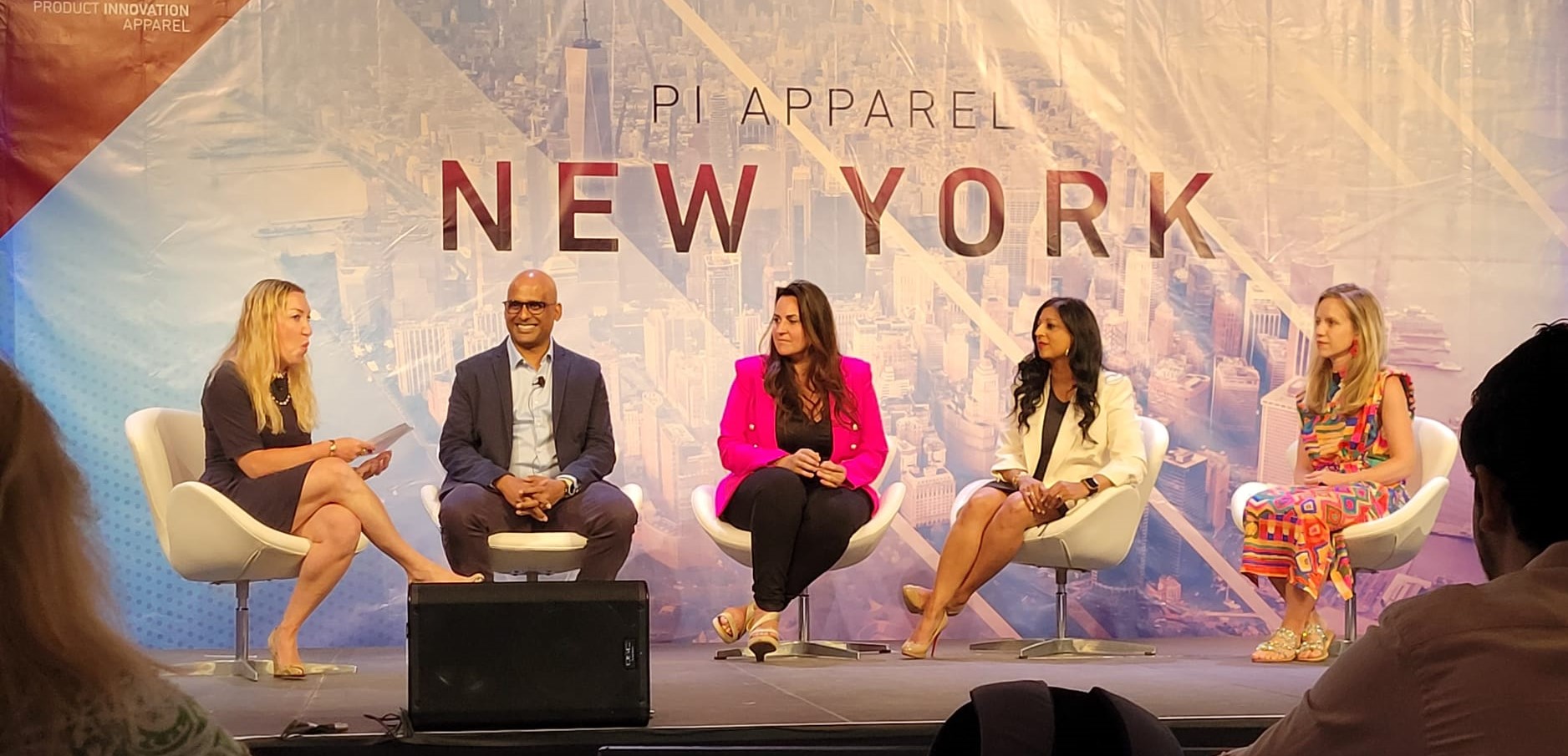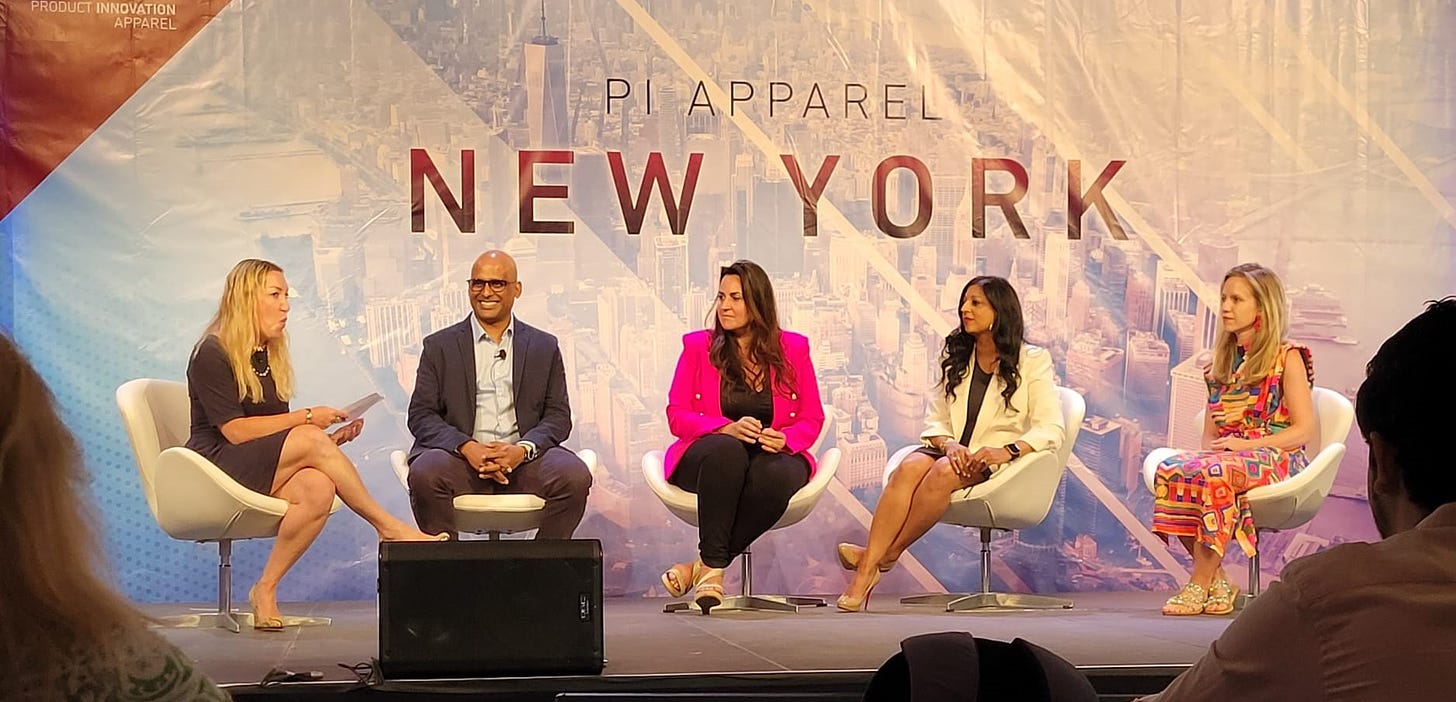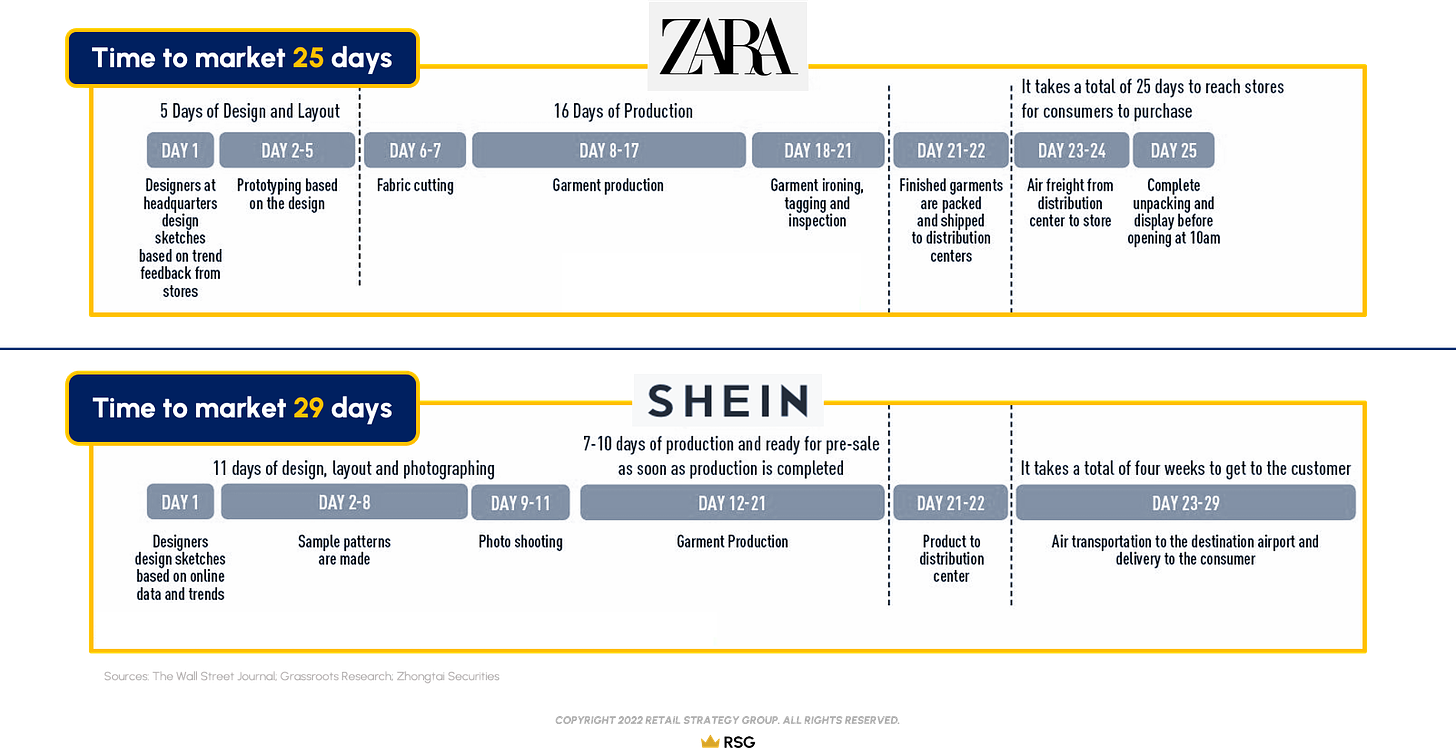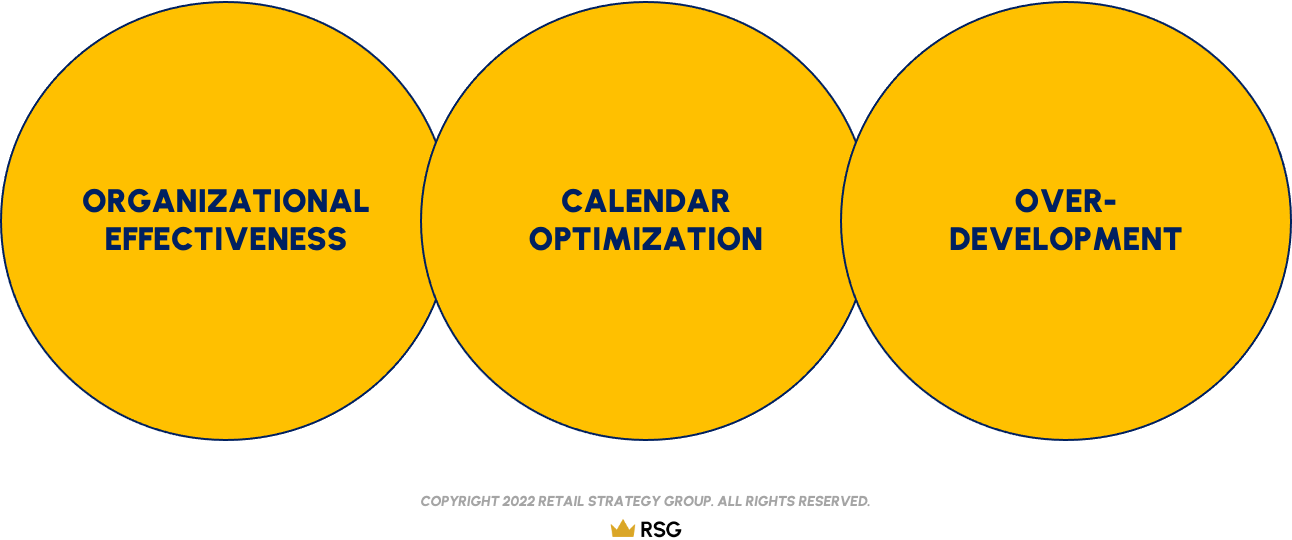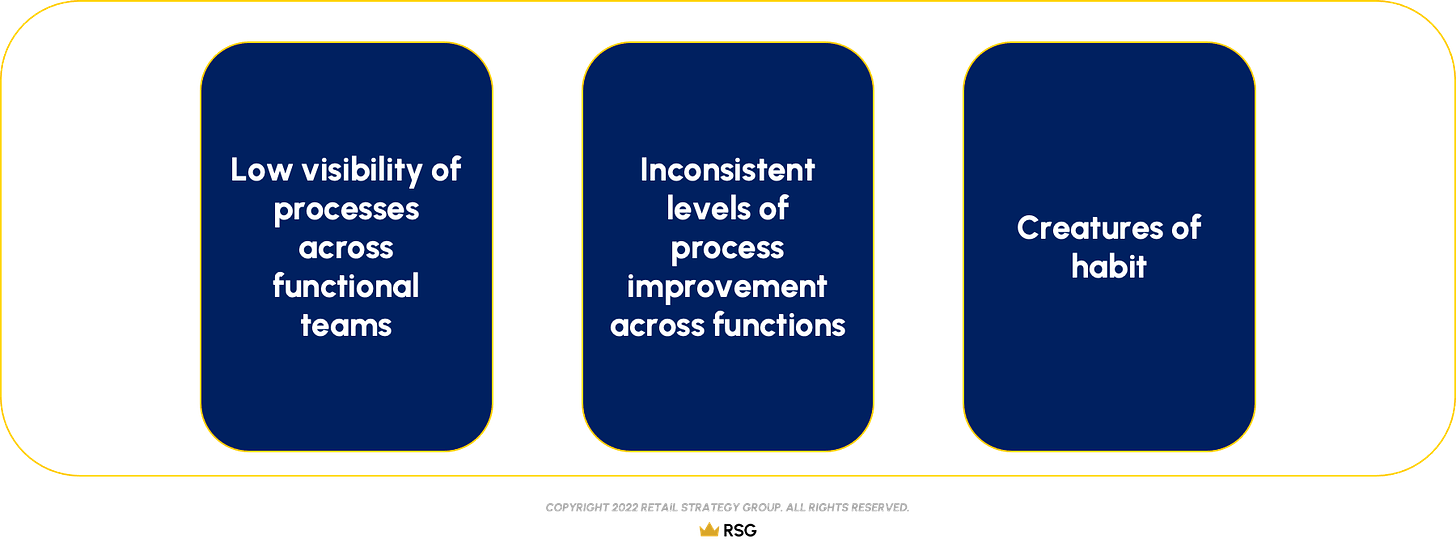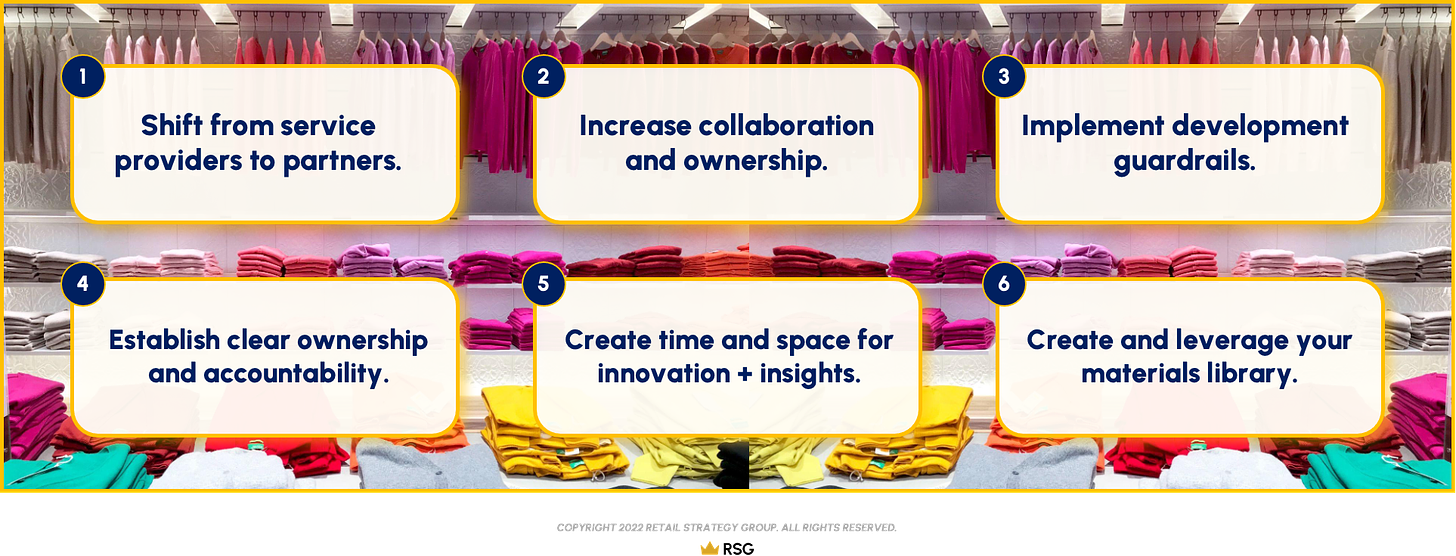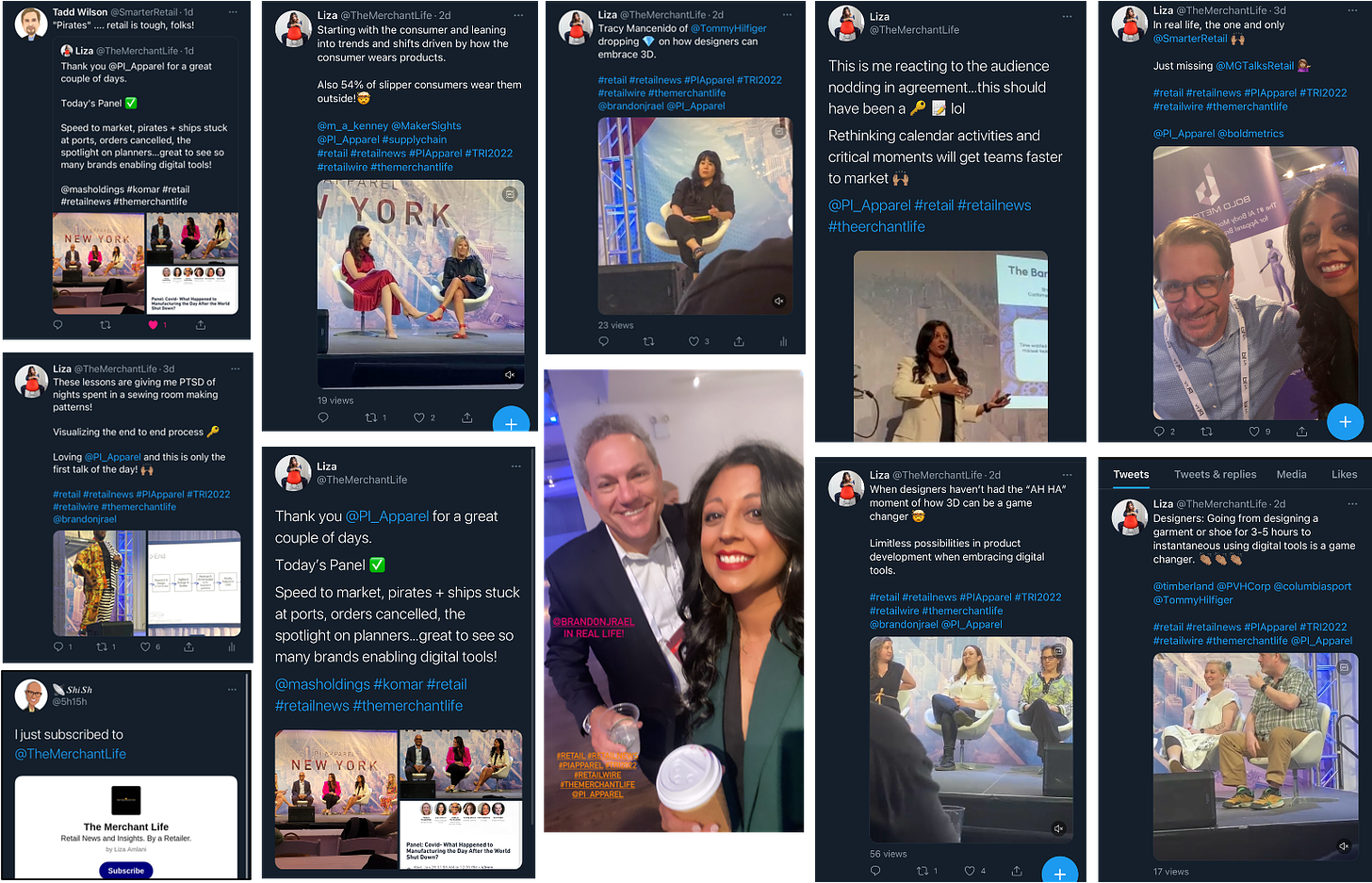Welcome to The Merchant Life – the newsletter for retailers and retail enthusiasts seeking the insider perspective of all things retail.
In this edition, we give you a taste of our latest trip to the big 🍎 where we attended the PI Apparel show, a space for retail and fashion leaders.
Liza took the stage three times for a focus group, panel discussion and a solo presentation.
For this issue of the newsletter, we bring you the written version of Liza’s solo presentation entitled “Pedal to the Metal – How Brand Can Dramatically Accelerate Speed to Market.”
Gather Around the Learning Tree
We start in 2014 during my time at Ralph Lauren: I had been working on and off with the brand for 15 years. I was the buying lead for the Lauren brand for Northern Europe, managing the buys for over 100 stores across the UK, Ireland, Scandinavia and the Baltics.
We are in Fall 2013 (FA13) and working on planning projections by category for Spring 2015 (SP15), before Spring 2014 (SP14) had touched down. We reviewed prints, colors and silhouettes while Fall goods are on the sales floor. We are slowly approaching the most wonderful (and stressful) time of year…the holiday selling season 🎁. As this is going on, I’m guessing what customers would want 14 months from now.
The latest Spring collection hadn’t dropped yet so “hindsighting” was not an option.
Meaning, I couldn’t leverage the latest Spring sales data to understand if what we invested in would actually sell.
Insights into future trends was non-existent. Instead, we relied on sales history, talking to our brand ambassadors + customers and using our “gut feelings” to make buying decisions.
A month later, SP14 hits the selling floor and customers have no interest in the bright colors and prints we selected for them.
The collection flops worse than a soccer player. So, we mark it down.
And since the SP15 assortment is “locked in”, we can’t make any adjustments based on what we’re seeing in store.
Unfortunately, this is something that repeats itself season after season.
And it happens across retailers.
The heart of the problem is simple, their speed to market is too slow.
Monitor The Symptoms
If a retailer is moving too slow in getting to market, they may experience the following:
- A reduction in both full price sales and gross margin.
- Missed forecasts and financial plans.
- The overlap between seasons begins to grow.
Over time, there are even larger consequences:
- Footfall in stores begins to decrease.
- Excess inventory piles up, it needs to be cleared out and that devalues the brand.
- Teams become more reactive so that margins can be preserved. But, they won’t have the time to innovate and create products that customers actually want.
Fold in the well publicized issues with supply chains – lack of containers, traffic jams at the ports, factory shutdowns – and retailers find themselves playing catch up to a dynamic customer base.
Fast Is Possible
Zara and Shein will tell you that speed to market is no issue for them.
Consider Exhibit A:
We’re not making a comment on sustainability here – we see you Shein. Of course, there is much to be unpacked here to understand how this is possible.
The key point here is that fast can be done.
Enabling Speed
In our work, we find that these are the areas where retailers are bogged down:
Barriers in how product creation teams are working together (or not working together) drives how efficiently product is being created.
Teams work in silos – decisions are made in isolation during critical moments in the process and critical players that are impacted are not in the room.
For example, a change in fabric used for a garment is being switched out during proto review. Design makes a switch but doesn’t know the material they chose has a lead time of 300 days.
They would have known that if the materials team was invited to the proto review meeting.
Design, product development, sourcing and materials teams go back and forth to find a solution. The result, the style is delayed and profitability has already been impacted while the goods haven’t even left the factory.
To drill down further, here are some of the themes that emerge when we look closely at the product creation process and why it takes so long to go from concept to market.
🚧 Cross functional teams should be involved at critical moments throughout the product creation journey. Trouble is, they frantically work on tasks directly in front of them and are unaware of how their actions affect one another.
🚧 Some teams are more advanced than others. One could be working with new digital tools while another is sending tech packs to factories via emailed zip files. Or, in my experience as a merchant, digital marketing teams are using data analytics to drive personalized promotional activity while merchants/planners are using excel to build assortments.
🚧 There is an inherent resistance to change. People have been working the same way for years, with the same teams, the same calendars and processes.
And while this is happening, customers are consistently evolving and doing so very quickly.
Pedal to the Metal
With that in mind, here’s how retailers can move faster in getting to market:
- Shift the relationship of functional teams from service providers to partners. This is especially valuable in changing relationships with factories. By looking at them as partners, there are many tasks that can be delegated from the retailer to the factory like materials testing and product fittings.
- Increase collaboration at critical milestone moments – this eliminates “Start and Stop” activity that arises from revisiting decisions already made.
- Build development guardrails across teams. For example, implement a cap on development requests from design every season.
- Clarify ownership and accountabilities of key calendar activities by defining roles and responsibilities across activities and process steps.
- Build specific moments for innovation and insights into the calendar. This way, customer feedback and shifts in distribution can be rapidly incorporated.
- Reduce overdevelopment by establishing a reference library of pre-approved materials that can be used season after season.
Brands that utilize the above approaches discover an immediate impact in their time to market.
We’ve seen this with our clients.
And, we see them experiencing the benefit of increasing their profitability along with becoming more in step with their customers.
All by increasing their speed.
Like our friend here:
PI Apparel In Pictures
🐦 Find more highlights from the show on our twitter @themerchantlife

